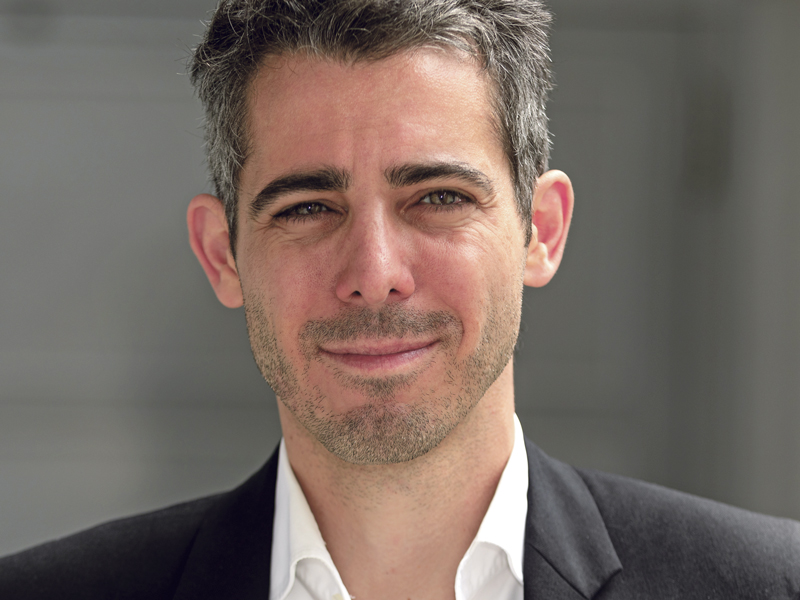
Jonathan Durocher took the reins of National Bank Financial Wealth Management (NBFWM) in May — and says things are going “extremely well” despite most of his initial communications being virtual.
“What helps a lot is the extraordinary work that [my predecessor] Martin Lavigne and the NBFWM team have accomplished over the past few years, and the fact that I know this team well, having worked almost 11 years with it,” Durocher says.
As president of NBFWM, he leads a brokerage of 834 advisors and associates with assets under management (AUM) of $110 billion — up from $106.3 billion at the end of February 2019.
This is a homecoming for Durocher, who began his career in 2003 at National Bank Financial (NBF) in compliance. He left briefly to join Invesco Canada Ltd. from November 2005 to November 2006, but then rejoined NBF to work in the wealth management arm from 2006 to 2014.
At the beginning of his second NBF stint, Durocher travelled across the country with investment advisors to help them court high-net-worth clients.
This experience was a key part of his career, he says: “I made 143 presentations in 18 months to wealthy investors when I was 25. Being told yes or no, being challenged all the time, opened my eyes a lot. ”
He was gradually put to work on various strategic files, including the acquisitions of Wellington West Holdings and HSBC Securities in 2011. Then, in September 2014, Durocher — then barely 33 — was appointed chairman of National Bank Investments.
Martin Gagnon, co-president and co-CEO at NBF, and executive vice president of wealth management, was Durocher’s boss for nearly five years, and before that his colleague for five years.
Gagnon attributes Durocher’s success to his ability to overcome obstacles and “achieve things that have never happened before, which explains his multiple promotions despite his young age,” Gagnon says.
Cimon Plante, portfolio manager and senior vice president at NBF, describes Durocher as humble and accessible, with an insatiable curiosity. “[He] can tell me about a dozen trends he has picked up in Canada and the United States. He knows all about innovation in our industry,” Plante says.
Durocher says he is most proud of implementing the concept of open architecture at NBF and developing a discretionary management program.
He now intends to extend the open architecture concept to NBFWM — this time in terms of technology, support and resources, more specifically in terms of “technology platforms for advisors.”
“We must seek technological talent, whether from fintechs, American technology suppliers, or even advisors who have developed innovative practices,” Durocher says, adding that the pandemic accelerated technology use among his firm’s advisors.
As for discretionary management, Durocher says the firm’s conversion levels have reached maturity, moving from 12 portfolios managers with fee-based accounts worth $4 billion initially to about 350 managers with accounts worth $80 billion.
This autumn, NBFWM will launch a new goals-based financial planning tool, which will be updated in real time using available client data. Clients and advisors will be able to see if a plan is still adequate based on changes in the market and client habits.
“We looked everywhere in the Canadian and American markets, without finding a supplier capable of really meeting the needs of the Canadian market. So we decided to develop it internally,” says Durocher of the tool, which began development four years ago.
Future growth
Durocher says that NBFWM ranks fifth among full-service brokers in Canada, adding that his goal is to become fourth-largest “and keep climbing.” His strategy for growth will include providing better tools to advisors and making targeted acquisitions of advisors who fit the firm’s culture.
Durocher inherits some challenges: from March 2017 to February 2020, the number of advisors registered at NBFWM fell from 764 to 703. During this period, AUM grew at a slower rate than at the firm’s competitors, going from $101 billion to $111 billion.
In Quebec specifically, AUM fell from $40.5 billion to $40 billion, in part because the number of advisors fell from 347 to 295. AUM per advisor in the rest of Canada grew from $116.7 million to $135.6 million during the same period.
Nonetheless, Durocher continues to be optimistic. “We intend to work with advisors who enjoy our entrepreneurial culture combined with the strength of a bank,” he says.
He adds that the need for financial advice has never been greater than it is now.
“In the midst of Covid-19, people were looking for personalized financial advice,” Durocher says. “It’s a basic need.”